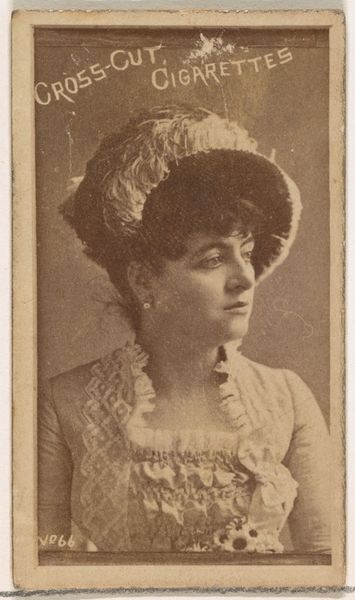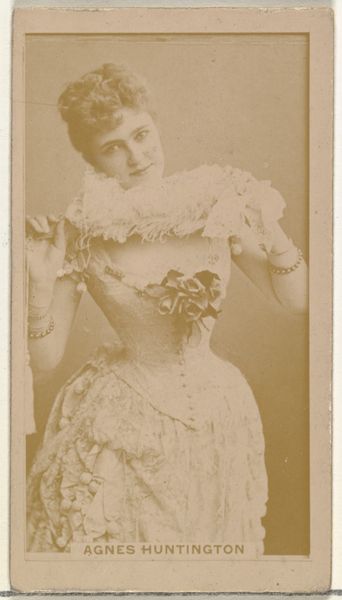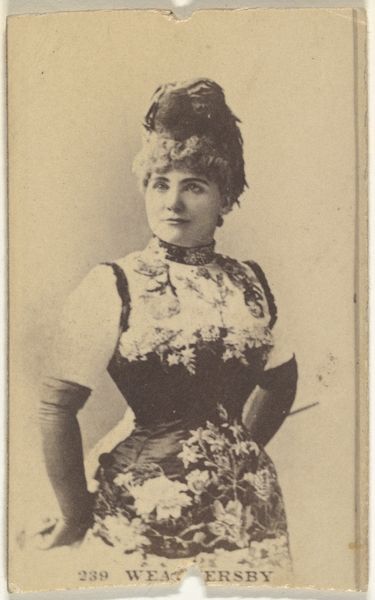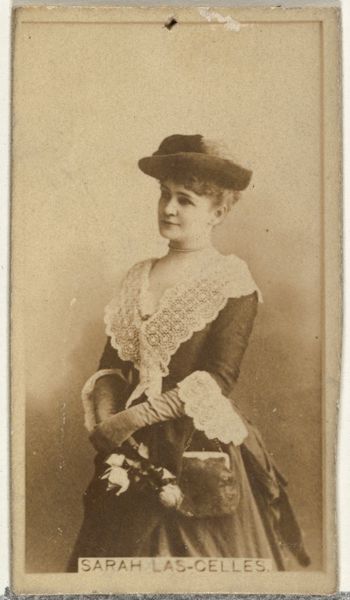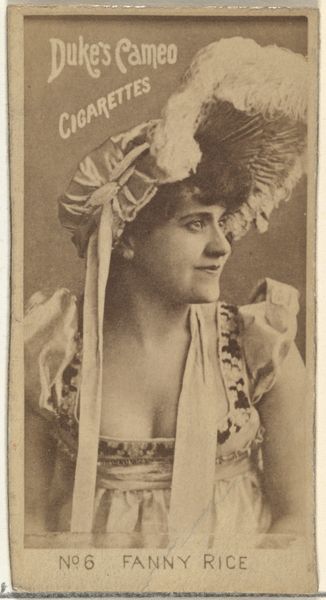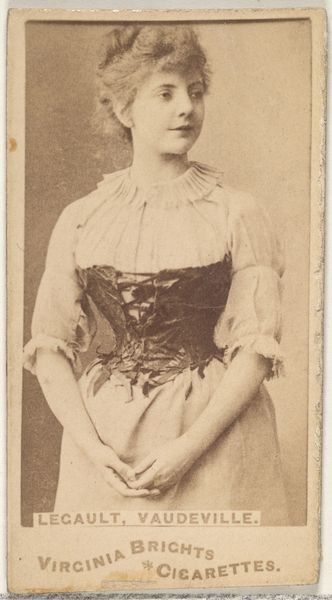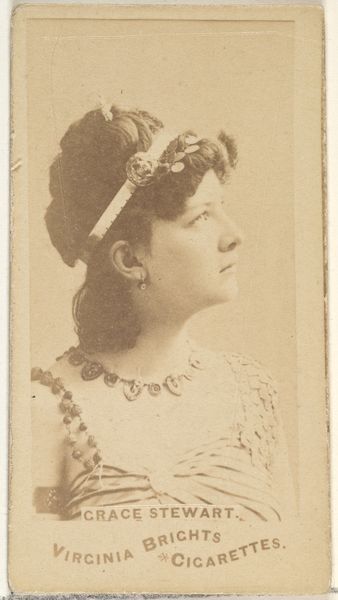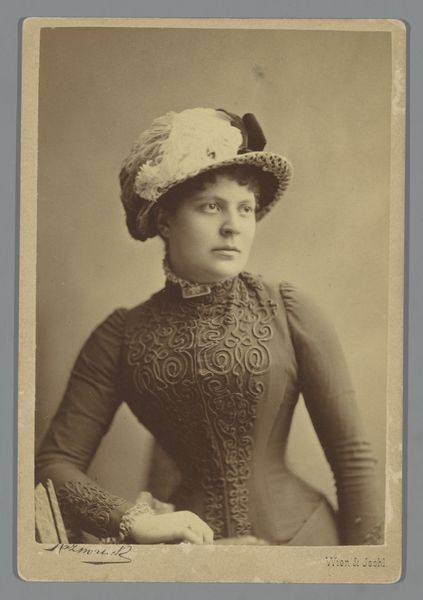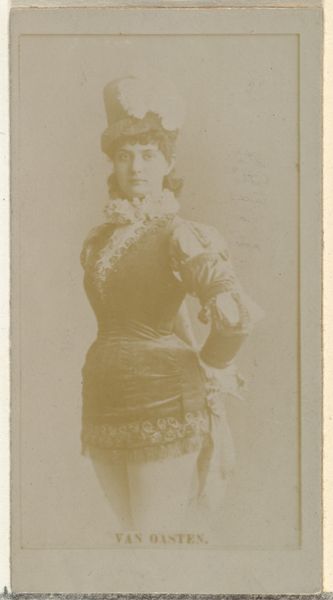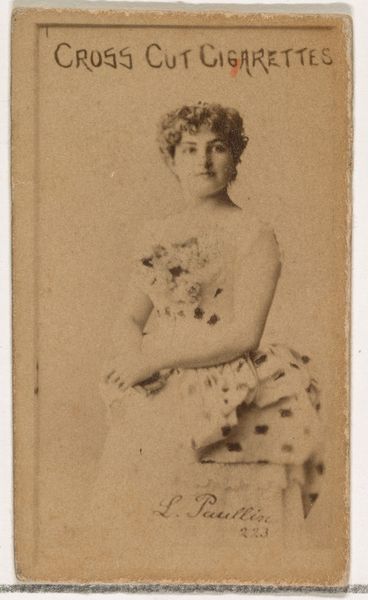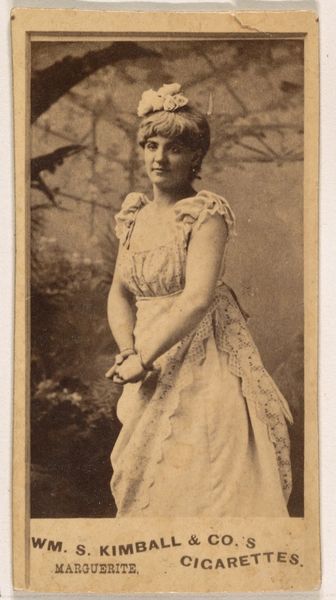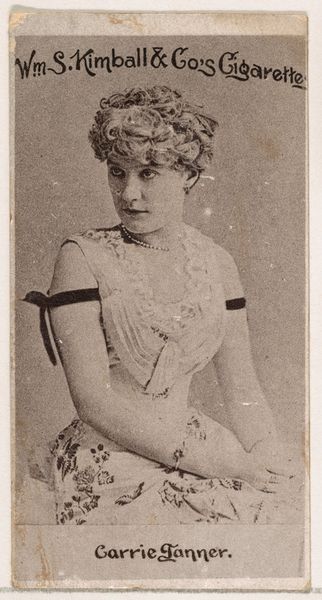
photography
#
portrait
#
photography
Dimensions: height 148 mm, width 98 mm, height 164 mm, width 105 mm
Copyright: Rijks Museum: Open Domain
Curator: The sitter has such a self-possessed look. It makes me wonder, who was she and what was her story? Editor: Indeed, the portrait suggests both grandeur and an almost wistful stillness. The subject of this photographic study is Theo Mann-Bouwmeester. The work is simply called "Portret Theo Mann-Bouwmeester," and dates from around 1900 to 1930, placing it in a fascinating period of artistic and social transition. Curator: I can certainly feel that transition. The ornate lace of her gown coupled with that intriguing beaded curtain feel representative of passing aristocratic style even as the stark presentation suggests modern portraiture. The hat seems to mark her identity, a reference to something… perhaps power, success? Editor: Exactly! Theo Mann-Bouwmeester was a celebrated Dutch actress during the late 19th and early 20th centuries. The hat, and her elaborate attire overall, would definitely symbolize her status as a cultural figure. Photography, around this time, became more widely accessible, changing not only how people viewed themselves, but how the cult of celebrity operated as well. Curator: The very act of taking a portrait has psychological dimensions—in essence, you are creating a public and permanent visual for scrutiny. It also presents an opportunity to project something intentional to the viewer. And the delicate fan…the lace seems like a reference to stagecraft or a theater curtain, about to open to a new performance. Editor: The Rijksmuseum’s decision to showcase a photographic portrait alongside paintings from the same era speaks volumes about the medium's acceptance into the art historical canon, but also shows photography's own intrinsic historical and cultural worth as both document and artistic expression. A portrait such as this speaks volumes, silently yet insistently. Curator: Looking at the image has deepened my appreciation for what's not said explicitly but is so richly communicated, giving faces to both historical insight and the inner emotional realms. Editor: Absolutely, and it invites further examination of the relationship between portraiture, photography and the establishment of public personas in a rapidly evolving world.
Comments
No comments
Be the first to comment and join the conversation on the ultimate creative platform.
